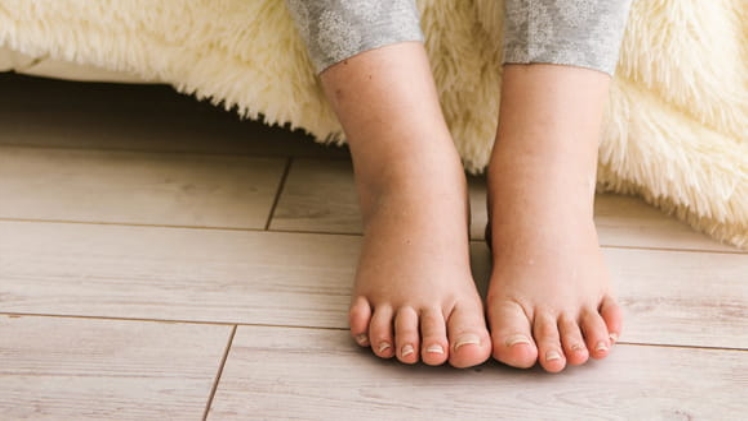Swollen feet and ankles can be a cause for concern, prompting individuals to question the underlying reasons behind this uncomfortable condition. The medical term for this swelling is “edema,” and it occurs when excess fluid accumulates in the tissues. While occasional mild swelling may not be alarming, persistent or severe edema could indicate an underlying health issue that requires attention.
Understanding Edema:
Edema in the feet and ankles is a common phenomenon and can occur for various if you have heel pain in Singapore. To comprehend why this happens, it’s essential to recognize the role of the lymphatic and circulatory systems. The circulatory system is responsible for pumping blood throughout the body, while the lymphatic system aids in draining excess fluid and waste products from tissues.
Several factors can disrupt this delicate balance, leading to fluid retention in the lower extremities. The causes can range from benign lifestyle choices to more serious medical conditions.
Lifestyle Factors:
Prolonged Sitting or Standing: Individuals with jobs requiring long hours of sitting or standing may experience swelling due to reduced circulation. Immobility hampers the natural flow of blood and lymphatic fluid, leading to fluid accumulation in the lower limbs.
Diet and Sodium Intake: High sodium intake can contribute to fluid retention. Sodium attracts water, and an excess of it in the body can lead to swelling. Diets rich in processed foods and excessive salt can exacerbate this issue.
Obesity: Carrying excess weight puts additional pressure on the veins in the legs, hindering efficient blood circulation and increasing the risk of edema.
Medical Conditions:
Venous Insufficiency: When the veins in the legs struggle to return blood to the heart, it can result in edema. This condition, known as venous insufficiency, often manifests with swelling, particularly after extended periods of standing.
Deep Vein Thrombosis (DVT): DVT occurs when blood clots form in deep veins, commonly in the legs. This condition not only causes swelling but can also pose serious health risks if the clot travels to the lungs.
Heart Failure: A weakened heart may struggle to pump blood efficiently, causing fluid to accumulate in the legs and other parts of the body. Heart failure can manifest with persistent, bilateral swelling in the lower extremities.
Kidney Disease: Impaired kidney function can lead to fluid retention in the body, resulting in swollen feet and ankles. The kidneys play a crucial role in regulating fluid balance, and dysfunction can disrupt this equilibrium.
Liver Disease: Conditions affecting the liver, such as cirrhosis, can lead to a decrease in protein production. Albumin, a protein produced by the liver, helps maintain fluid balance. Reduced levels of albumin can contribute to edema.
Hormonal Changes:
Pregnancy: Swelling of the feet and ankles is common during pregnancy due to hormonal changes and the increased pressure on blood vessels by the growing uterus.
Menstrual Cycle: Some women may experience mild edema during their menstrual cycle, often associated with hormonal fluctuations.
When to Seek Medical Attention:
While occasional mild swelling may be a result of benign factors, persistent or sudden-onset edema should not be ignored. Seeking prompt medical attention is crucial in the following scenarios:
Unexplained Swelling: If swelling occurs without an apparent cause or if it is severe and sudden, it could indicate a medical emergency.
Pain and Redness: Swelling accompanied by pain, redness, and warmth may suggest an underlying infection or inflammation that requires medical evaluation.
One-Sided Swelling: If swelling is limited to one leg or foot, it may be indicative of a blood clot, and immediate medical attention is necessary.
Breathing Difficulties: If swelling extends to the thighs and abdomen or is associated with difficulty breathing, it could be a sign of heart failure and requires urgent medical intervention.
Managing and Preventing Edema:
Elevate Your Feet: Elevating the legs above heart level can assist in reducing swelling. This helps the lymphatic system drain excess fluid.
Compression Stockings: Compression stockings can improve blood circulation and help prevent swelling, especially for individuals with jobs that involve prolonged sitting or standing.
Regular Exercise: Engaging in regular physical activity promotes blood circulation and reduces the risk of edema. Simple exercises like walking, swimming, and cycling can be beneficial.
Healthy Diet: A balanced diet low in sodium can help prevent fluid retention. Including potassium-rich foods, such as bananas and leafy greens, can also be beneficial.
Stay Hydrated: Drinking an adequate amount of water is crucial for maintaining overall health and preventing dehydration, which can contribute to edema.
Conclusion:
While swollen feet and ankles can be a result of benign factors, it’s essential to pay attention to persistent or severe edema, as it can be indicative of underlying health issues. Lifestyle modifications, such as regular exercise, a healthy diet, and proper hydration, play a crucial role in preventing and managing mild cases of edema. However, if swelling is accompanied by other concerning symptoms, seeking medical attention is imperative for a comprehensive evaluation and appropriate management. Early intervention can address the root cause of the swelling and prevent potential complications, ensuring optimal leg health and overall well-being.

